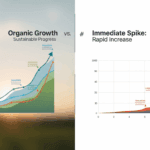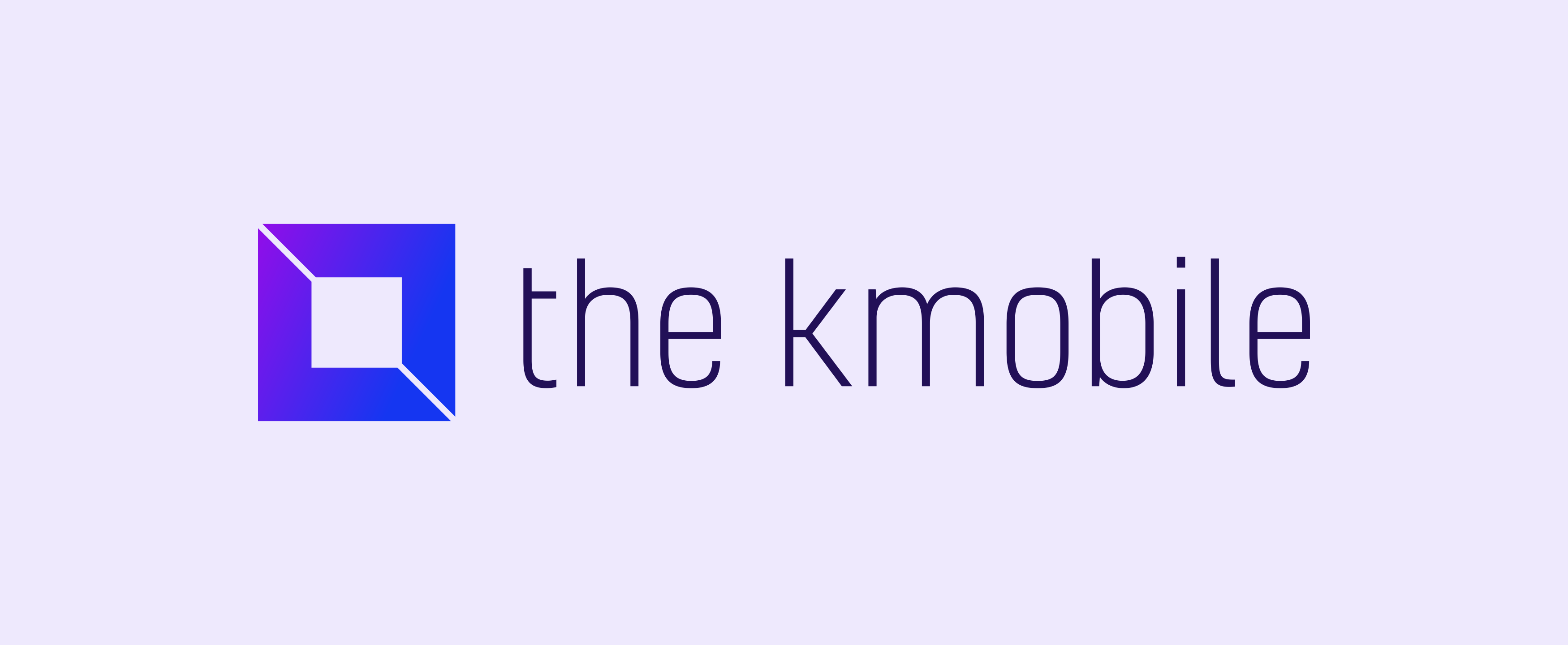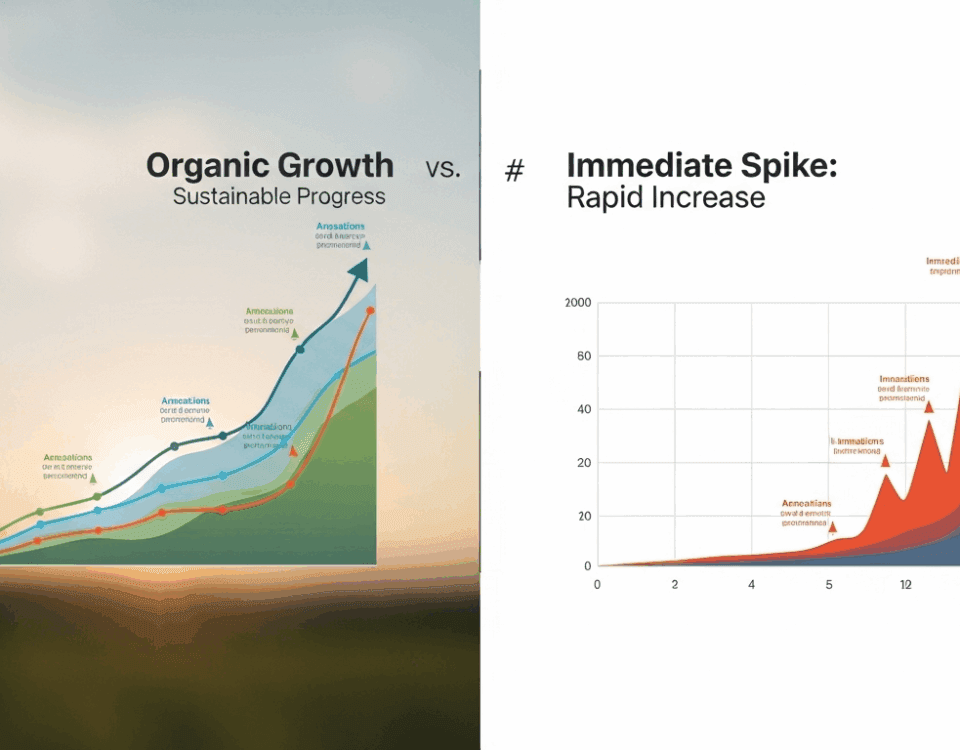
App Store vs. Google Play: Decoding the Key ASO Differences for 2025
July 14, 2025
ASO vs. Paid Advertising: When to Use Each Strategy for Maximum App Growth
August 7, 2025Key Takeaways
App Store Optimization (ASO) is the cornerstone of mobile app success in today’s competitive marketplace. Here’s what you need to know to dominate the app stores:
- Holistic optimization approach: ASO goes beyond keywords to encompass metadata, visual assets, user engagement, and conversion optimization for maximum discoverability and downloads.
- Data-driven decision making: Leverage real-time analytics and ASO tools to track performance, identify opportunities, and adapt to algorithm changes swiftly.
- Localization is key: Tailoring your app for different markets through translated metadata and culturally relevant visuals can dramatically increase global reach.
- Automation saves time: Use ASO tools to automate keyword tracking, review management, and performance reporting, freeing your team to focus on strategic growth.
- User experience matters: High ratings, positive reviews, and strong engagement metrics directly impact your app’s ranking and conversion rates.
By implementing these strategies and utilizing powerful ASO tools, you can ensure your app remains competitive and visible in the ever-evolving app ecosystem. Also check App Store vs. Google Play: Decoding the Key ASO Differences for 2025
What is App Store Optimization (ASO)?
Definition and Core Components
App Store Optimization (ASO) is the systematic process of improving your app’s visibility and appeal within app stores to increase organic downloads and user acquisition. Think of it as SEO for mobile apps – but with unique challenges and opportunities specific to the mobile ecosystem.
ASO focuses on three fundamental pillars:
1. Keyword Optimization: Strategic selection and placement of relevant keywords in your app’s metadata to improve search rankings and discoverability.
2. Conversion Rate Optimization: Optimizing your app store listing’s visual and textual elements to maximize the percentage of visitors who download your app.
3. User Engagement & Retention: Building features and experiences that keep users active, leading to better ratings, reviews, and overall app store performance.
Why ASO Matters More Than Ever
With over 2.2 million apps on the App Store and 3.5 million on Google Play, standing out organically has never been more challenging. Consider these compelling statistics:
* 63% of app downloads come from app store searches
* Apps ranking in the top 10 for relevant keywords see 10x more downloads than those ranking 11-20
* 70% of users never scroll past the first page of search results
* High-rated apps (4+ stars) receive 2.5x more downloads than low-rated apps
The stakes are high, but the rewards for effective ASO are substantial. A well-optimized app can achieve sustainable growth without relying solely on paid advertising.
The Evolution of ASO: From Keywords to User Experience
Early Days: The Keyword Era
In the early days of app stores, ASO was primarily about keyword stuffing and basic metadata optimization. Developers would cram as many relevant keywords as possible into their app titles and descriptions, often at the expense of readability and user experience.
The Algorithm Revolution
As app stores matured, their algorithms became increasingly sophisticated. Apple and Google began considering factors beyond keywords:
- User engagement metrics: Time spent in app, session frequency, retention rates
- App quality signals: Crash rates, performance metrics, user satisfaction
- Social proof: Ratings, reviews, and user-generated content
- Local relevance: Geographic targeting and cultural adaptation
Modern ASO: A Holistic Approach
Today’s ASO requires a comprehensive strategy that balances technical optimization with user experience and engagement. The most successful apps understand that ASO isn’t just about getting found – it’s about getting downloaded and retained.
Core ASO Ranking Factors
1. App Store Metadata
Your app’s metadata is the foundation of ASO success. This includes:
App Title & Subtitle
- Include your primary keyword in the title
- Keep titles under 30 characters for optimal display
- Use subtitles to include secondary keywords
- Make it memorable and brandable
Keywords Field (App Store)
- Research high-volume, low-competition keywords
- Use all 100 characters available
- Separate keywords with commas, not spaces
- Avoid repeating words from your title
App Description
- Write compelling, benefit-focused copy
- Include relevant keywords naturally
- Use bullet points and formatting for readability
- Include a clear call-to-action
2. Visual Assets
Visual elements significantly impact conversion rates:
App Icon
- Design a distinctive, memorable icon
- Ensure it looks good at small sizes
- Use colors that stand out in search results
- Test different designs with A/B testing
Screenshots & Videos
- Showcase your app’s key features
- Include compelling captions with keywords
- Use high-quality, professional images
- Create preview videos that highlight unique value propositions
3. User Engagement Metrics
App stores increasingly prioritize user satisfaction:
Ratings & Reviews
- Encourage satisfied users to leave reviews
- Respond to negative reviews promptly
- Maintain a rating above 4.0 stars
- Use in-app prompts strategically
Retention & Engagement
- Focus on Day 1, Day 7, and Day 30 retention
- Minimize app crashes and bugs
- Provide excellent user experience
- Implement engaging features that encourage regular usage
Advanced ASO Strategies for 2025
1. Voice Search Optimization
With the rise of voice assistants, optimizing for conversational queries is crucial:
- Include natural language phrases in your metadata
- Focus on question-based keywords (“How to track expenses”)
- Consider local search terms for location-based apps
- Test voice search queries related to your app category
2. Personalization and Custom Store Listings
Google Play’s Custom Store Listings (CSLs) allow for targeted experiences:
- Create keyword-specific landing pages
- Tailor messaging for different user segments
- A/B test different store listings
- Optimize for specific search intents
3. In-App Events and Promotional Content
Leverage app store promotional features:
- Create compelling in-app events
- Use seasonal promotions and campaigns
- Participate in app store featuring opportunities
- Develop engaging promotional content
4. Localization Strategy
Expand your global reach through effective localization:
- Translate metadata for target markets
- Adapt visuals for cultural preferences
- Research local keywords and search patterns
- Consider regional app store differences
—
ASO Tools and Analytics
Essential ASO Tools
To succeed in ASO, you need the right tools:
Keyword Research Tools
- AppTweak
- MobileAction
- Sensor Tower
- App Annie
Performance Tracking
- Firebase Analytics
- AppsFlyer
- Adjust
- Branch
A/B Testing Platforms
- StoreMaven
- SplitMetrics
- App Store Connect A/B Testing
Key Metrics to Track
Monitor these essential ASO metrics:
- Keyword rankings for target terms
- Conversion rates from store visits to downloads
- Organic download volume
- Rating and review trends
- User engagement metrics
- Competitor performance
Common ASO Mistakes to Avoid
1. Keyword Stuffing
Don’t sacrifice readability for keyword density. Modern algorithms penalize obvious keyword stuffing.
2. Ignoring User Experience
Poor app performance, crashes, or confusing interfaces will hurt your rankings regardless of optimization efforts.
3. Neglecting Reviews and Ratings
Low ratings can significantly impact your app’s visibility and conversion rates.
4. Copying Competitors Blindly
While competitor analysis is valuable, blindly copying their strategies without understanding your unique value proposition is counterproductive.
5. Inconsistent Optimization
ASO requires ongoing effort. Set-it-and-forget-it approaches rarely succeed in the long term.
The Future of App Store Optimization (ASO): Emerging Trends
1. AI-Powered Optimization
Machine learning algorithms are becoming more sophisticated, requiring more nuanced optimization strategies.
2. Privacy-First Approach
With increasing privacy regulations, ASO strategies must adapt to work within new data limitations.
3. Cross-Platform Consistency
As users engage with apps across multiple devices, maintaining consistent optimization across platforms becomes crucial.
4. Video-First Content
Short-form videos and interactive previews are becoming increasingly important for app discovery and conversion.
Case Study: tryAstro’s ASO Success
One excellent example of effective ASO implementation is tryAstro, a travel planning app that achieved remarkable organic growth through strategic optimization.
Key Success Factors:
Strategic keyword targeting: Focused on high-intent travel planning terms
Compelling visual assets: Professional screenshots showcasing the app’s AI-powered features
Strong user engagement: High retention rates and positive reviews
Localized optimization: Tailored metadata for different travel markets
Continuous optimization: Regular A/B testing and performance monitoring
The team used tryAstro to demonstrate how a well-executed ASO strategy can drive sustainable organic growth in a competitive category.
Building Your ASO Strategy: A Step-by-Step Guide
Phase 1: Research and Analysis (Weeks 1-2)
1. Conduct competitor analysis
- Identify top-performing apps in your category
- Analyze their keywords, metadata, and visual strategies
- Identify gaps and opportunities
2. Keyword research
- Use ASO tools to find relevant keywords
- Analyze search volume and competition
- Prioritize keywords based on relevance and opportunity
3. Audit current performance
- Review existing metadata and assets
- Identify areas for improvement
- Set baseline metrics for tracking progress
Phase 2: Implementation (Weeks 3-6)
1. Optimize metadata
- Update app title, subtitle, and description
- Optimize keywords field (App Store)
- Improve app description with compelling copy
2. Enhance visual assets
- Design or update app icon
- Create new screenshots and preview videos
- A/B test different visual elements
3. Improve user experience
- Address any app performance issues
- Implement review prompts
- Optimize onboarding flow
Phase 3: Monitoring and Optimization (Ongoing)
1. Track performance metrics
- Monitor keyword rankings
- Analyze conversion rates
- Track user engagement metrics
2. Iterate and improve
- A/B test different approaches
- Update strategy based on data
- Stay current with algorithm changes
3. Scale successful strategies
- Expand to new keywords and markets
- Optimize for different user segments
- Implement advanced features
Conclusion
App Store Optimization is not a one-time effort but an ongoing process that requires dedication, data analysis, and continuous improvement. By implementing the strategies outlined in this guide, you can significantly improve your app’s visibility, downloads, and overall success in the app stores.
Remember that ASO success comes from a combination of technical optimization, user experience excellence, and strategic thinking. Focus on providing value to your users while optimizing for discoverability, and you’ll be well-positioned for long-term success.
The app store landscape is constantly evolving, so stay informed about the latest trends and algorithm changes. With the right approach and tools, you can achieve sustainable organic growth and build a successful mobile app business.
ASO results typically begin to appear within 2-4 weeks of implementation, but significant improvements often take 2-3 months. The timeline depends on factors like competition level, app quality, and optimization effectiveness.
Yes, effective ASO can significantly impact monetization by increasing organic downloads, improving user quality, and reducing customer acquisition costs. Higher visibility often leads to better user retention and increased revenue opportunities.
Review and update your ASO strategy monthly, with major optimizations every 3-6 months. Stay alert to algorithm changes and competitor movements that might require immediate adjustments.
Yes, ASO strategies vary between game and utility apps. Games often focus on engagement metrics and social features, while utility apps emphasize problem-solving and efficiency. However, the fundamental principles of keyword optimization and user experience remain the same.
While free tools can provide basic insights, paid ASO tools offer more comprehensive data, competitor analysis, and optimization recommendations. For serious app developers, investing in quality ASO tools typically pays for itself through improved performance.





